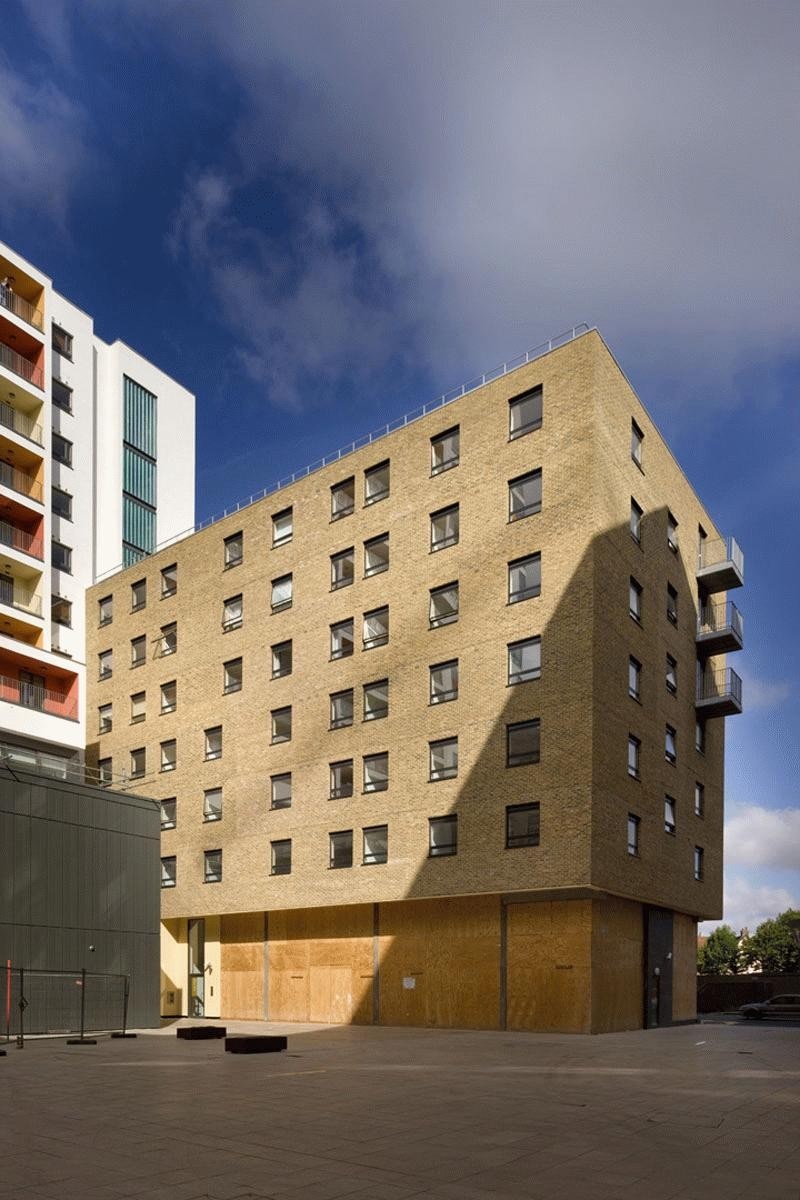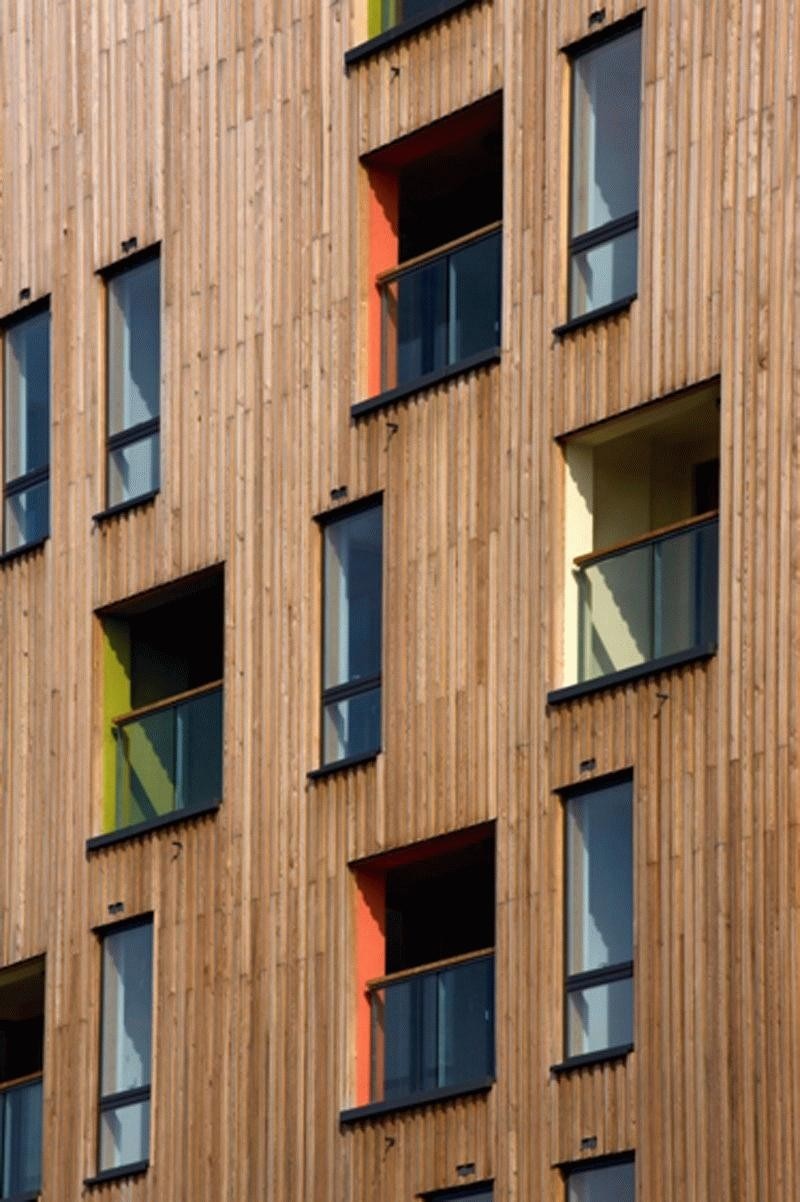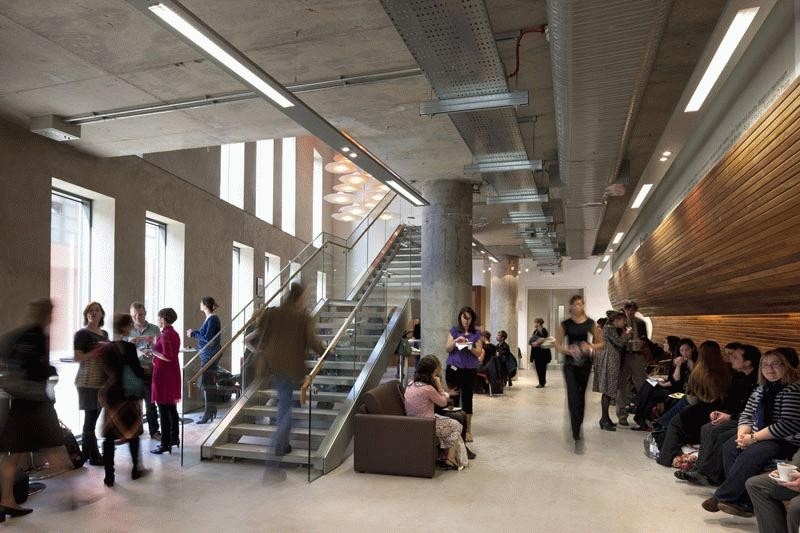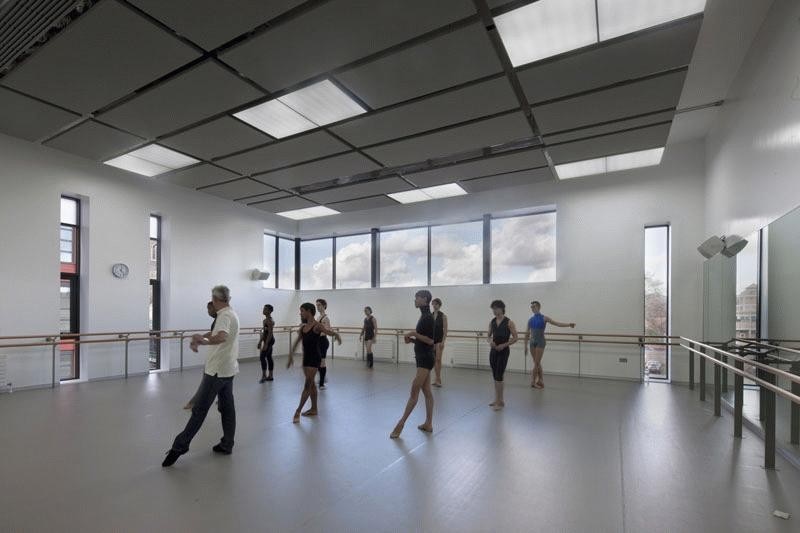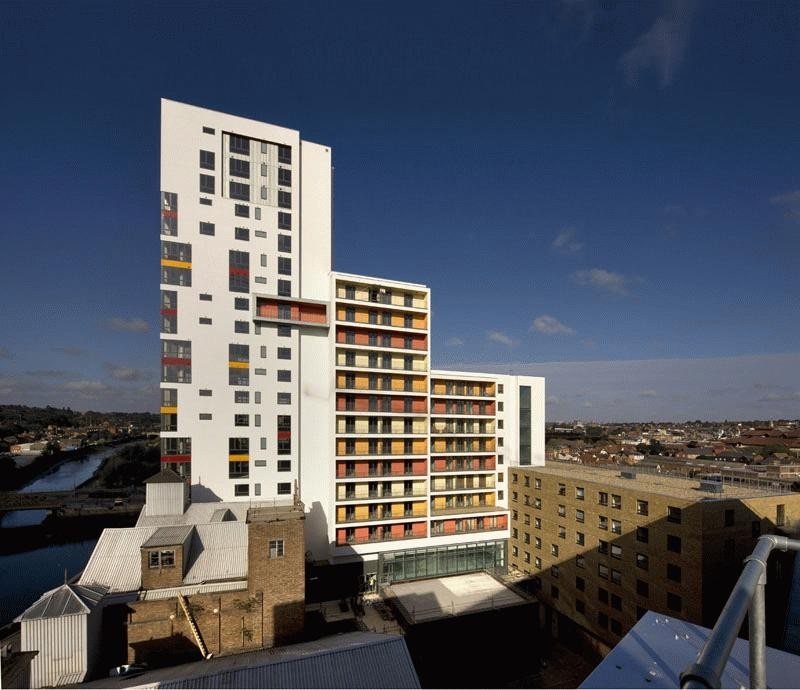In the mid 19th and early 20th Centuries Ipswich docks was the hub of the local milling trade, processing grain from a multitude of East Anglian farms. However, as time moved on the mills fell into redundancy and the docks into disrepair. In 2002, the East of England Development Agency (EEDA) acquired the site of Cranfields Mill for redevelopment and held an architectural competition for its regeneration. John Lyall Architects won it with developer Wharfside Regeneration.
Practice principal and local resident, John Lyall, wanted to retain some of the original mill buildings. He initially envisaged utilising a pair of giant 15 storey concrete silos, too, but their structural stability was found wanting and they had to be demolished. In their place now stands East Anglia’s tallest tower.
Lyall likens his work at Albion Quay to pulling teeth: “Our approach to the Quay’s regeneration compares with dentistry, where any sound structures of architectural quality are retained, while buildings of indifferent appearance or unusable construction are taken out.”
At 23 storeys, the tower houses high class apartments, as well as Dance East at its base and a peregrine falcon nesting box at its 71 m high summit. In addition, new residential blocks, with shops and offices at their lower levels now line the dock and the development is unified around a public square.
The different buildings, and their historic links, are expressed by the architect’s choices of cladding materials. The tower seeks to emulate the monolithic character of the original concrete silos and so a pale render was specified. Splashes of colour were added to be-jewel Ipswich’s new landmark. At the tower’s base, Dance East is highlighted as a separate entity, adorned in dark zinc panels. The dockside residential blocks are clad in larch and a dark brown/black brick, echoing the mill buildings, one of which still stands between them and the tower. Colour is again cleverly used to pick out balconies and add extra vibrancy to the facades.
At ground level, the quayside is lined with bars and restaurants that spill out under an historic colonnade. This waterside promenade is linked to the city centre by the public courtyard, which will be used by restaurants and for cultural events by Dance East. The courtyard itself is paved and landscaped for piazza-style living, with space for restaurant seating and interaction between owners of overlooking apartments and visitors. The new link from the waterfront to the courtyard is lined with large glass showcases, where the Ipswich Maritime Trust will display artifacts from local nautical history.
Dance East’s new home in the tower base is itself is a large building, the equivalent of four-storeys in height and incorporating four large studios, one of which serves as a 200-seat theatre. All studios are double-height spaces and are fitted out with state-of-the-art facilities. Dance East was completed under a separate contract and opened in 2009. “In the context of the waterfront as a whole, our scheme establishes an exciting composition of peaks and troughs, terminating with the flourish of the 23 storey tower at the south-western corner. This is a significant development for Ipswich, and while it is modest by big city standards, it is the tallest building in East Anglia.”
Work started on site in July 2007 and Lyall’s design now enriches Albion Quay, bringing new homes and businesses to the dockside. However, it has done it in a way that is both strong architecturally and sensitive to the surroundings and their history. Ipswich has a new architectural landmark, visible from most parts of the city. It also has an urban quarter that will bring new life back into an area that was once the bustling heart of Ipswich and East Anglia.
Photos by Morley von Sternberg

